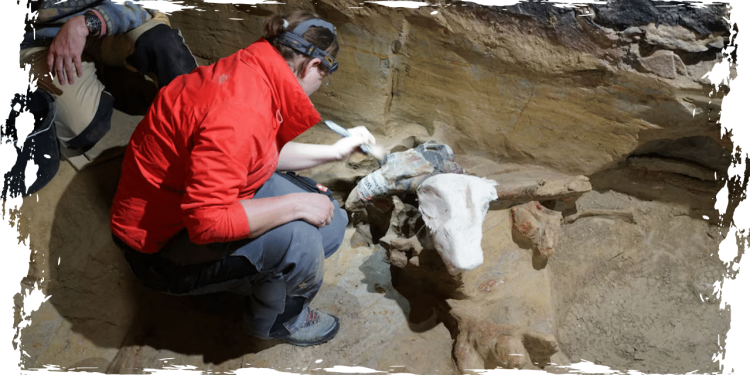During the renovation of his wine cellar in Austria, a man stumbled upon a remarkable find that surpassed the age of any vintage bottle of Merlot. What he discovered were the remains of ancient mammoths, estimated to be around 40,000 years old.
According to the Austrian Archaeological Institute, researchers believe that the recent mammoth fossil discovery in Austria is one of the most significant finds in over a century. The fossilized bones, which date back to the prehistoric Stone Age, are believed to belong to at least three different mammoths.
Andreas Pernerstorfer, a winemaker from the Austrian village of Gobelsburg, made an unexpected discovery while renovating his cellar. Located approximately 45 miles west of Vienna, Pernerstorfer stumbled upon a set of bones, as stated in a recent press release from the institute.
Pernerstorfer contacted the Federal Monuments Office to report the bones, who then directed him to the Austrian Archaeological Institute of the Austrian Academy of Sciences.
Archaeologists have made a groundbreaking discovery, referring to it as an “archaeological sensation.” They have successfully unearthed multiple layers of mammoth bones during their ongoing excavation, which commenced in mid-May.
“This excavation is providing us with a rare opportunity to study the remarkably dense bone layer of mammoths,” remarked Hannah Parow-Souchon, the excavation leader, in a press release. She further added, “Using modern techniques, we are able to delve into this unique find in Austria for the first time.”
Scientists are continuing to investigate how Stone Age individuals managed to hunt the colossal creatures that once roamed the earth, belonging to the elephantid genus. This recent discovery has further fueled their curiosity.
“We have limited knowledge regarding the methods employed by humans in hunting mammoths,” Parow-Souchon explained in the press release.
According to the release, researchers are questioning whether the cellar was the actual location where the mammoths died and whether they were chased and trapped there.
Researchers are currently examining the collection of fossils, which will later be sent to the Natural History Museum Vienna for restoration.
In 2021, researchers made a groundbreaking discovery in northeast Siberia. They uncovered million-year-old molars from three mammoth specimens, making it the oldest skeletal fragments ever found.










